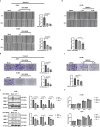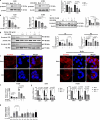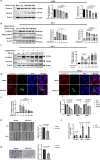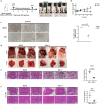OH2 oncolytic virus inhibits non-small-cell lung cancer metastasis via β-catenin pathway suppression
- PMID: 40721857
- PMCID: PMC12304221
- DOI: 10.1038/s42003-025-08520-y
OH2 oncolytic virus inhibits non-small-cell lung cancer metastasis via β-catenin pathway suppression
Abstract
The five-year survival rate for non-small-cell lung cancer (NSCLC) remains poor, primarily due to tumor invasion and metastasis. This study evaluates the anti-metastatic potential of the oncolytic virus OH2 in NSCLC. OH2 inhibits migration and invasion of NSCLC by downregulating β-catenin, as demonstrated in vitro and in a lung metastasis model. OH2 reduces β-catenin mRNA levels, suppressing its transcriptional activity and downstream expression of Matrix Metalloproteinases (MMPs), key mediators of extracellular matrix degradation. Proteomic analysis of the secretome confirms reduced MMPs expression following OH2 treatment. Mechanistically, the OH2 tegument protein UL41 is identified as a critical factor that degrades β-catenin mRNA, thus inhibiting β-catenin nuclear transcriptional activity. These findings reveal a novel anti-metastatic mechanism of OH2 via disruption of the β-catenin/MMPs axis and support its potential as a therapeutic candidate for invasive NSCLC.
© 2025. The Author(s).
Conflict of interest statement
Competing interests: The authors declare no competing interests.
Figures






Similar articles
-
Integrin αVβ1-activated PYK2 promotes the progression of non-small-cell lung cancer via the STAT3-VGF axis.Cell Commun Signal. 2024 Jun 6;22(1):313. doi: 10.1186/s12964-024-01639-1. Cell Commun Signal. 2024. PMID: 38844957 Free PMC article.
-
The novel DNA methylation marker FIBIN suppresses non-small cell lung cancer metastasis by negatively regulating ANXA2.Cell Signal. 2024 Aug;120:111197. doi: 10.1016/j.cellsig.2024.111197. Epub 2024 Apr 30. Cell Signal. 2024. PMID: 38697447
-
TMEM196 inhibits lung cancer metastasis by regulating the Wnt/β-catenin signaling pathway.J Cancer Res Clin Oncol. 2023 Feb;149(2):653-667. doi: 10.1007/s00432-022-04363-w. Epub 2022 Nov 10. J Cancer Res Clin Oncol. 2023. PMID: 36355209 Free PMC article.
-
PD-L1 expression in advanced NSCLC: Insights into risk stratification and treatment selection from a systematic literature review.Lung Cancer. 2017 Oct;112:200-215. doi: 10.1016/j.lungcan.2017.08.005. Epub 2017 Aug 10. Lung Cancer. 2017. PMID: 29191596
-
Role of Mesenchymal Markers in Colorectal Cancer Metastasis.Mol Biol Rep. 2025 Jul 4;52(1):673. doi: 10.1007/s11033-025-10745-3. Mol Biol Rep. 2025. PMID: 40613936 Review.
References
-
- Siegel, R. L., Miller, K. D., Wagle, N. S. & Jemal, A. Cancer statistics. 2023. Ca. Cancer J. Clin.73, 17–48 (2023). - PubMed
-
- Arbour, K. C. & Riely, G. J. Systemic therapy for locally advanced and metastatic non-small cell lung cancer: a review. JAMA322, 764–774 (2019). - PubMed
-
- Simeone, J. C., Nordstrom, B. L., Patel, K. & Klein, A. B. Treatment patterns and overall survival in metastatic non-small-cell lung cancer in a real-world, US setting. Future Oncol.15, 491–502 (2019). - PubMed
-
- Shalhout, S. Z., Miller, D. M., Emerick, K. S. & Kaufman, H. L. Therapy with oncolytic viruses: progress and challenges. Nat. Rev. Clin. Oncol.20, 160–177 (2023). - PubMed
-
- Malhotra, J. & Kim, E. S. Oncolytic viruses and cancer immunotherapy. Curr. Oncol. Rep.25, 19–28 (2023). - PubMed
MeSH terms
Substances
Grants and funding
LinkOut - more resources
Full Text Sources
Medical
Miscellaneous

